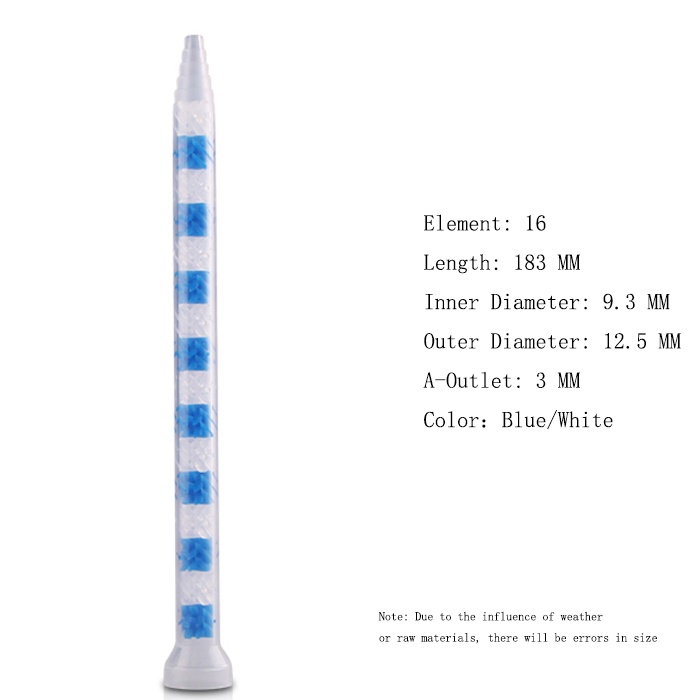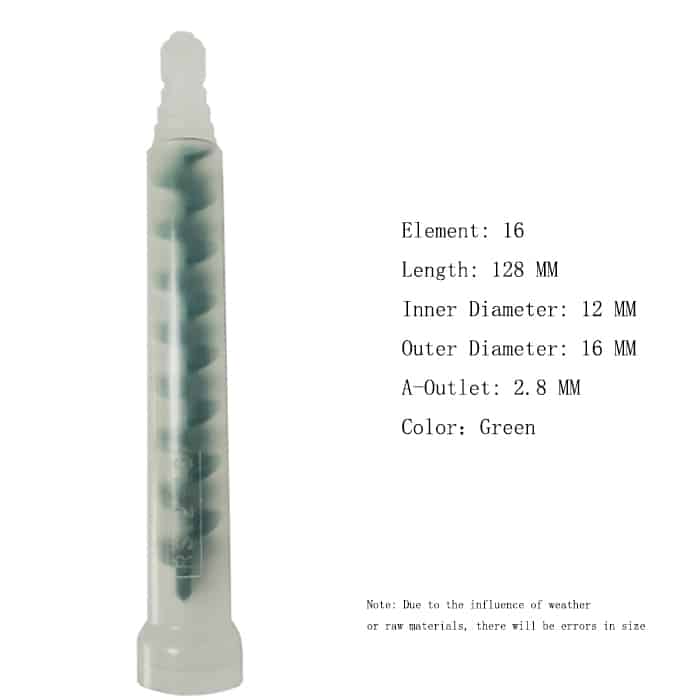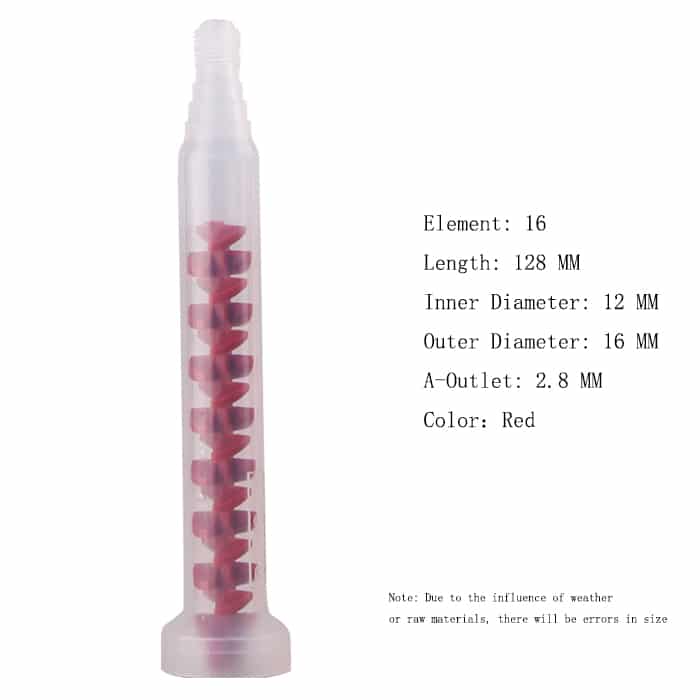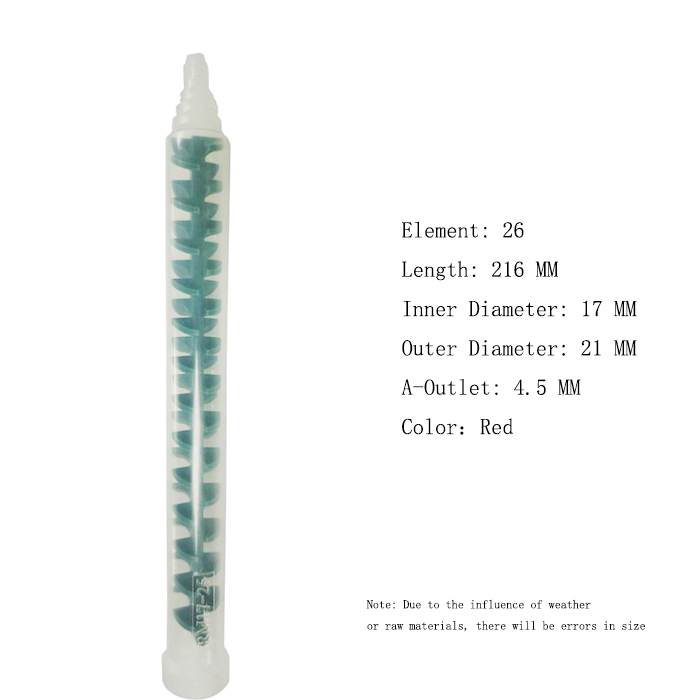Two-component mixer nozzles are an essential part of the manufacturing and production industry. They are used for mixing two different components or materials such as adhesives, sealants, and resins. These nozzles have become an indispensable tool for many industries, including automotive, construction, aerospace, and marine. The use of two-component mixer nozzles has become increasingly popular due to their ability to provide a more precise and accurate mixing process, which results in improved product quality and consistency.
In this ultimate guide, we will explore the basics of two-component mixer nozzles, including their design, functionality, and applications. We will also look at the different types of two-component mixer nozzles, their features and benefits, and how to choose the right nozzle for your application.
Design and Functionality
Two-component mixer nozzles are designed to mix two different materials at a predetermined ratio. The nozzle consists of two chambers, each containing a different material. These chambers are separated by a static mixer, which is a series of small mixing elements that help to thoroughly mix the two components as they pass through the nozzle.
The mixing elements within the static mixer are typically made of polypropylene, polyethylene, or stainless steel. The choice of material depends on the application and the compatibility of the materials being mixed. The size and shape of the mixing elements also play a crucial role in the mixing process. The elements are designed to promote efficient mixing by creating turbulence and shear within the materials.
The nozzle itself is usually made of plastic or metal and is designed to be easily attached to a dispenser or cartridge. The dispenser or cartridge is used to apply the mixed material to the surface or substrate.
Applications
Two-component mixer nozzles are used in a wide range of applications, including automotive, construction, aerospace, marine, and electronics. They are used for bonding, sealing, and coating applications and can be used with a variety of materials such as epoxy, polyurethane, silicone, and acrylics.
In the automotive industry, two-component mixer nozzles are used for bonding and sealing components such as windshields, sunroofs, and body panels. In the construction industry, they are used for sealing and bonding materials such as concrete, masonry, and wood. In the aerospace industry, they are used for bonding and sealing components such as aircraft interiors, wings, and fuselages. In the marine industry, they are used for bonding and sealing materials such as fiberglass, metals, and plastics.
Types of Two-Component Mixer Nozzles
There are several types of two-component mixer nozzles available on the market today. These include static mixer nozzles, spiral mixer nozzles, and dynamic mixer nozzles.
-
Static Mixer Nozzles



Static mixer nozzles are the most common type of two-component mixer nozzle. They are designed to mix the two components as they pass through the nozzle using a series of static mixing elements. These elements are fixed in place and are designed to create turbulence and shear within the materials, ensuring thorough mixing.
-
Spiral Mixer Nozzles
Spiral mixer nozzles are designed to mix the two components using a spiral mixing element. The element is designed to create a helical flow pattern, which promotes efficient mixing. Spiral mixer nozzles are typically used for low to medium viscosity materials.
-
Dynamic Mixer Nozzles



Dynamic mixer nozzles are designed to mix the two components using a dynamic mixing element. The element is designed to move and rotate within the nozzle, creating turbulence and shear within the materials. Dynamic mixer nozzles are typically used for high viscosity materials.
Features and Benefits
Two-component mixer nozzles offer several features and benefits, including:
-
Precise mixing ratios:
Two-component mixer nozzles are designed to provide a precise mixing ratio, which is essential for consistent product quality and performance.
-
Thorough mixing:
Two-component mixer nozzles use static, spiral, or dynamic mixing elements to ensure thorough mixing of the two components, resulting in a homogenous mixture.
-
Easy to use:
Two-component mixer nozzles are easy to use and can be attached to a dispenser or cartridge, making them ideal for on-site applications.
-
Versatile:
Two-component mixer nozzles can be used with a variety of materials, including epoxy, polyurethane, silicone, and acrylics, making them versatile and suitable for a wide range of applications.
-
Cost-effective:
Two-component mixer nozzles are cost-effective, as they eliminate the need for manual mixing, reducing labor costs and increasing production efficiency.
Choosing the Right Two-Component Mixer Nozzle
Choosing the right two-component mixer nozzle is essential for achieving optimal results. There are several factors to consider when selecting a nozzle, including:
-
Material compatibility:
It is essential to choose a nozzle that is compatible with the materials being mixed. This ensures that the materials are mixed correctly and that the nozzle does not degrade or become damaged.
-
Mixing ratio:
Different nozzles are designed to mix materials at different ratios. It is important to choose a nozzle that can achieve the desired mixing ratio for your application.
-
Viscosity:
The viscosity of the materials being mixed will determine the type of nozzle that should be used. Low viscosity materials are best mixed using spiral or static mixer nozzles, while high viscosity materials require dynamic mixer nozzles.
-
Flow rate:
The flow rate of the materials being mixed will also impact the type of nozzle that should be used. Higher flow rates require larger nozzles with larger mixing elements.
Conclusion
Two-component mixer nozzles are an essential tool for the manufacturing and production industry. They provide a precise and accurate mixing process, resulting in improved product quality and consistency. There are several types of two-component mixer nozzles available, including static mixer nozzles, spiral mixer nozzles, and dynamic mixer nozzles, each with their own features and benefits. Choosing the right nozzle is essential for achieving optimal results, and factors such as material compatibility, mixing ratio, viscosity, and flow rate should be considered. With the right nozzle, two-component mixing can be efficient, cost-effective, and produce high-quality results.
